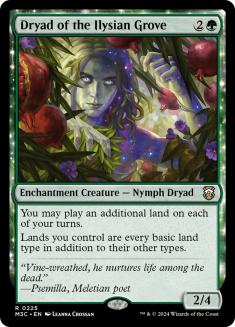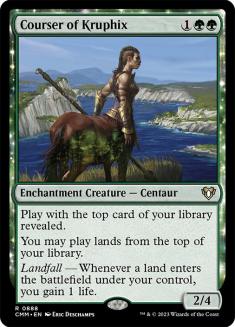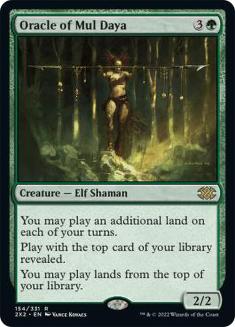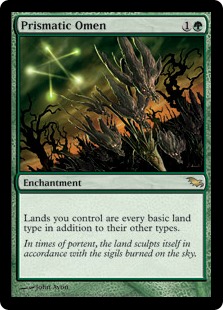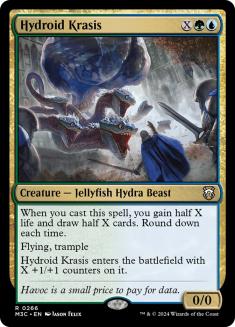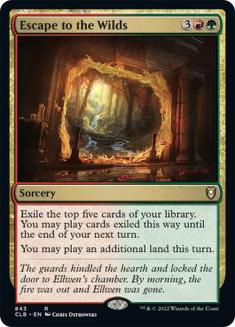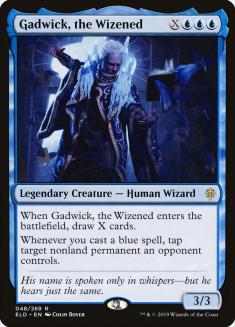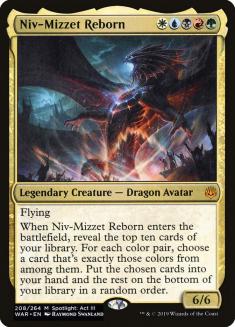In 1999, a movie called American Pie was released. At the time it was getting a great deal of buzz as mainstream media considered it “too vulgar to exist.” As a newly minted teenager, that was exactly why this was a must-see movie, but unfortunately my mother forbade it. In her eyes I was too young to watch something so inappropriate. While ambitious to disobey my mother’s wishes, I was still with a lack of options given I had no money, didn’t own a car, or even have legal documentation that would get me into the theater.
Luckily for me my soon-to-be stepfather was looking for a great way to bond. Once the movie came out on DVD, he secretly gifted me a copy. I’d never seen anything like it, and laughed every single time I watched it. The wait was worth it, and American Pie became my favorite movie ever. A few years later American Pie 2 was announced, and I was now old enough to procure my own copy of the movie. I gathered my group of friends, and we all sat down to watch the second installment of the American Pie franchise.
It was fine. Maybe even a little disappointing if I’m being honest. Like, it had good jokes, but ultimately it was just a knock-off version of the original. I didn’t understand why I disliked it so much back then. Now, as an adult, I can look back and realize I was just chasing a high that the first American Pie so wonderfully gave me. Nothing would ever be as good as the feeling of watching that movie was, and American Pie 2 was unknowingly doomed from the start.
That’s how I’d describe Dryad of the Ilysian Grove.
There’s no getting around it: Dryad of the Ilysian Grove is simply the “fixed” version of cards like Courser of Kruphix and Oracle of Mul Daya. Both of these powerhouses helped define their respective Standard formats, and they were both, in my opinion, glaring design mistakes. I’m exceptionally happy that they did not go down that same rabbit hole when printing their newest “lands matter” card for Theros Beyond Death.
Now there are two reasons why I think these cards were mistakes, but at the time of playing with them I was none the wiser. First of all, I believe green should never get great card advantage. Recently Standard’s been plagued with the color green having card advantage and the color’s ability to be paired with either blue or black. These combinations are dangerous, as these two colors shore up most of green’s weaknesses and vice versa.
The second mistake may be a personal preference of mine, but it has to do with the information gained by the top card of the library being revealed. Open information is just bad for interesting gameplay, and Courser of Kruphix mirrors would often devolve into both players knowing exactly what was in each other’s hands. This made for very chess-like gameplay, and often led to boring games of Magic.
Dryad of the Ilysian Grove does not create card advantage like its predecessors did, which is exactly why I’m calling it a “fixed” card. It’s also why I don’t have the highest hopes for it, but differing opinions do exist.
Dryad of the Ilysian Grove does have a second ability to make up for its lack of card advantage, and that’s actually just the entire text of the card Prismatic Omen. This two-mana enchantment has seen on-and-off play in Modern’s TitanShift as it’s a great way to reduce the total number of lands needed to begin triggering Valakut, the Molten Pinnacle. Dom believes that the combination of both of Dryad of the Ilysian Grove’s abilities might just be enough to put this deck back on the map.
I do not.
Dryad of the Ilysian Grove is the absolute perfect example of a card that has a very high ceiling but also a very low floor, and no real in-between. Using Dom’s example, Dryad of the Ilysian Grove can be used to kill players as early as Turn 3 in a Modern Scapeshift deck. Turn 1 Arboreal Grazer into Dryad of the Ilysian Grove on Turn 2 allows for six lands to be on the battlefield on the third turn. The Nymph’s second ability allows for searched-up Valakuts to also count as Mountains, triggering them all to deal lethal.
So that sounds pretty good, right? But how many cards does it take for this to occur? Well this Turn 3 kill scenario involves a copy of Arboreal Grazer, Dryad of the Ilysian Grove, an Hour of Promise or Scapeshift, and six lands. If you’re on the play, that’s all of them. Every card you’ve had access to must be a specific combination of these three nonland spells and the rest lands. I’m no math scientist, but the odds of that happening must be really low, right? This combination also leaves no room for an opponent interacting with you, or even for a single mulligan to occur.
The lesson to be learned here is that Dryad of the Ilysian Grove’s first ability is a high-variance one. Sometimes it’ll allow for some very degenerate things, but more often than not, “Magic” will get in the way. You’ll get to play your fourth land a turn earlier, but that won’t matter since you didn’t draw your fifth one to cast your Nissa, Who Shakes the World a turn earlier. You’ll mulligan into a mediocre hand and draw this during your first draw step. Whatever it is, this card will cause many feel-bads as you’re trying to chase a high from the first time you did something disgusting with it.
What has to be understood when it comes to cards like Dryad of the Ilysian Grove is a card like this isn’t technically a ramp spell even though it operates best in decks that want to accelerate. It allows for a certain strategy to exist, but it doesn’t facilitate that gameplan. It can’t act as the last land you need to cast your big effect or be high-impact when you’re lacking things to do with your extra mana. In a ramp strategy, its value comes from having a perfect distribution of specific cards, and we all know how often that actually happens for players.
Now that doesn’t make this card unplayable. In fact, I honestly think it will see some play, but not in the ways that others are suggesting. Crokeyz had a reasonable take on the card which I’d like to explore more.
Dryad of the Ilysian Grove’s second ability actually does some heavy lifting in Standard thanks to Nissa, Who Shakes the World’s static ability. Nissa loves her some Forests and this little 2/4 turns all of your lands into them. Not only that, but they are also every other basic land type as well! This allows for every land you have on the battlefield to tap for two mana, but also any color. Cards like Noxious Grasp, Aether Gust, and Negate are all ready to be cast off any untapped land you control as long as both Dryad of Ilysian Grove and Nissa are on the battlefield.
Now this is something I could get behind. Not only does Dryad of the Ilysian Grove improve the value of your Nissa’s mana production, but it also sounds pretty great with Hydroid Krasis. It just seems bonkers to think about the times when all three are in combination with one another, but any two-card combination still seems fine.
Sometimes you’ll ramp into six lands by Turn 4 which lets you cast a nice Hydroid Krasis, but I’m more interested in the later turns when the extra land drops could be beneficial after the trigger resolves. Often I’ll cast a late-game Hydroid Krasis and draw lands I am no longer able to play along with a cheap interactive spell. Having Dryad of the Ilysian Grove on the battlefield to allow me to make these land drops and also hold up interaction sounds pretty nice to me. Again, the card had its downsides, but these might be worth managing.
The biggest concern when building with Dryad of the Ilysian Grove is going to be changing the way you envision a ramp deck being designed with it in mind. You can’t just put this card in a generic ramp deck and expect things to be just fine. The card won’t synergize well with a normal ramp strategy as it’s not providing card advantage itself. You have to find another way.
Let’s take a look at Andrea Mengucci’s Simic Ramp deck from Mythic Championship VII for an example.
Creatures (20)
- 4 Hydroid Krasis
- 1 End-Raze Forerunners
- 2 Arboreal Grazer
- 4 Risen Reef
- 1 Agent of Treachery
- 4 Leafkin Druid
- 4 Cavalier of Thorns
Planeswalkers (4)
Lands (28)
Spells (8)
Sideboard

Andrea’s deck was designed around the Elemental package of Risen Reef, Leafkin Druid, and Cavalier of Thorns. He also played a couple of Arboreal Grazers to help facilitate draws that did not have either Leafkin Druid or Growth Spiral. We couldn’t just slot Dryad of the Ilysian Grove into this deck as there are many potential non-combos (nombos) at play.
Firstly, we don’t want to play Arboreal Grazer and Dryad of the Ilysian Grove in the same deck for reasons expressed during our Modern discussion of the card. We’ve all played with Arboreal Grazer and know it’s sometimes a complete blank, so we don’t want to double down on situations like that.
Next we have to mitigate for the times that Dryad of the Ilysian Grove isn’t creating value. That’s usually happening when we’re out of lands to put on the battlefield. To facilitate this we have to start reimagining what a ramp deck has to look like with Dryad of the Ilysian Grove in mind. To make the best use out of this creature we need to find sources of card advantage that can help create a sort of engine the deck can be based around. You play extra lands, draw extra cards, play extra lands, and draw extra cards. This tactic has worked before, and there’s a few cards in current Standard that might be up for the task.
These three cards are examples of ways to build around Dryad of the Ilysian Grove that can help mitigate against the card’s downsides. All three of them provide card advantage which Dryad lacks, but also benefit from the Nymph’s abilities as well. It’s easy to think about putting this card in a deck with Cavalier of Thorns; Nissa, Who Shakes the World; and Hydroid Krasis, but maybe it will be best in a deck planning to generate an overwhelming amount of card advantage. If that’s the case, removal will have to be a part of the equation, and we may very well find ourselves in a world with a new way to build midrange decks that go over the top of the metagame.
Odds are that will not be the case, as the top-end combo of Nissa, Who Shakes the World and Hydroid Krasis is pretty difficult to beat, but I at least hope I’ve led you in the right direction when it comes to designing your own decks with Dryad of the Ilysian Grove. I know I’ll be working on it myself once the full set list of Theros Beyond Death is previewed, but I won’t be shedding any tears if I have to keep cashing checks thanks to Nissa.



